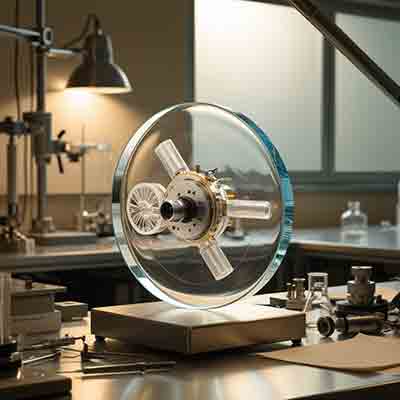We use these wafers on a regular basis for a variety of projects for academic research in to biomedical MEMS devices. We're just about finishing up the last batch we have. I'll let you know how the latest one fares.
Substrates Used to Fabricate Biomedical Micro-Optical Devices
Substrates Used to Fabricate Biomedical MEMS
A senior research associate requested a quote for the following:
Reference #45579 for specs and pricing.
Get Your Quote FAST! Or, Buy Online and Start Researching Today!
Soda Lime Glass (SLG) for Biomedical Sensing Chip Fabrication
A chief scientist researching biomedical sensors requested a quote for the following:
We need the following soda lime glass for Transparent, bio-compatible mechanical support for biomedical sensing chip fabrication.
150mm Soda Lime
.55 +/-.05 mm thick
Reference #248147 for specs and pricing.
What Substrates are used to Fabricate Biomedical Micro-Optical Devices?
Biomedical micro-optical devices are fabricated using various substrates chosen for their biocompatibility, optical properties, and ease of fabrication. Common substrates include:
-
Silicon (Si): Widely used for its excellent mechanical properties, compatibility with standard microfabrication techniques, and good thermal conductivity. Silicon is suitable for infrared optical applications in biomedical devices.
-
Silicon Dioxide (SiO2): Known for its optical transparency and biocompatibility, SiO2 (thermal oxide) is
 used as a coating or insulating layer on silicon substrates. It is commonly used in optical waveguides and micro-lenses.
used as a coating or insulating layer on silicon substrates. It is commonly used in optical waveguides and micro-lenses. -
Quartz (Fused Silica): Offers high optical transparency, low thermal expansion, and chemical resistance. Quartz is used in high-precision optical components, such as lenses and waveguides, in biomedical imaging and sensing.
-
Glass: Various types of glass, such as borosilicate and aluminosilicate glass, are used for their optical clarity, chemical resistance, and thermal stability. Glass substrates are common in biomedical optics, including micro-lenses, prisms, and optical fibers.
-
Polymers: Biocompatible polymers, such as Polydimethylsiloxane (PDMS), Polyethylene Glycol (PEG), and Polyimide, are used for their flexibility, ease of processing, and ability to form complex microstructures. Polymers are used in microfluidic devices, flexible sensors, and other biomedical optical components.
-
Sapphire (Al2O3): Valued for its excellent thermal and chemical stability, as well as its optical transparency. Sapphire substrates are used in harsh environments and applications requiring high durability, such as implantable devices and high-power laser optics.
-
Titanium (Ti): Known for its excellent biocompatibility, corrosion resistance, and strength. Titanium substrates are used in implantable optical devices and components requiring direct contact with biological tissues.
-
Poly(methyl methacrylate) (PMMA): A transparent polymer with good optical properties and biocompatibility. PMMA is used in microfluidic devices, optical waveguides, and other biomedical optical applications.
-
Zinc Selenide (ZnSe): Offers a wide transmission range from visible to infrared and is used in infrared optics for biomedical imaging and diagnostic devices.
-
Calcium Fluoride (CaF2): Provides high transparency over a broad wavelength range, from ultraviolet to infrared. CaF2 substrates are used in lenses, prisms, and other optical components requiring minimal absorption and scattering in biomedical applications.
Each substrate provides unique benefits for specific biomedical micro-optical applications, with the choice depending on biocompatibility, optical transparency, mechanical properties, and compatibility with fabrication processes.
